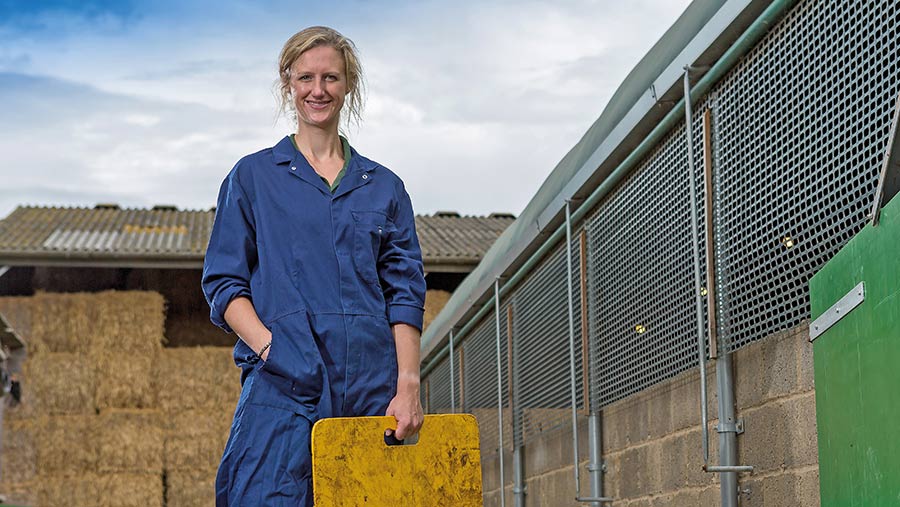Farmer Focus: We need 40p/kg more to break even with pigs
 Sophie Hope © Richard Stanton
Sophie Hope © Richard Stanton I’ve just returned exhausted from a great day at the Pig and Poultry Fair. Despite the dire position the livestock sector is in, there was a pleasant, and almost excitable, buzz in the air.
This is most likely the result of finally getting to see people in the flesh for the first time in two years. But there was also a sense of camaraderie, and a dogged resolve that things will improve for our can-do industry.
A few people at the fair mentioned they had enjoyed reading my columns and I had helped them during this tough time, as they knew they were not alone.
See also: Why strategic recovery is needed for pig industry survival
This is extremely flattering, and good to know, as I sometimes worry that my writing is very much a selfish outpouring of woe.
I encourage anyone to put pen to paper when struggling. It can be extremely cathartic and help you organise your thoughts, even if it’s then crumpled up, never to be read again. (Admittedly, I never read any of my articles back.)
I mentioned last month that we were just about to farrow our first reduced batch. It was a stonker.
We had 754 piglets born alive from 45 sows (16.76 a sow). Of these, we had 16.05 born alive a sow from our new Topigs Criss Cross mothers put to Rattlerow Duroc terminal sires, and 20.54 born alive a sow from the Topigs Criss Cross cross Topigs Landrace.
For comparison, our average over the past six months was in the region of 15.3 piglets a sow. We then weaned 14.64 a sow with a litter weight of 107kg at 28 days.
We are absolutely over the moon with these latest figures, but now we just need to be rewarded financially for our good performance.
Thankfully, we have seen an increase of 40p/kg over the past two months. But we need to see 30-40p on top of that to cover cost of production, which is being reported as 200-225p/kg industry wide.
If this disparity between input costs and prices paid isn’t closed soon, 80% of the pig farmers in this country will not survive another 12 months.
We’ve already seen 10% of sows exit the sector. We still desperately need the support of consumers, supermarkets and the government.

